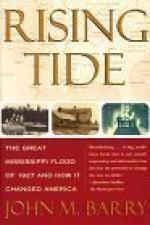
|
| Name: _________________________ | Period: ___________________ |
This test consists of 15 multiple choice questions and 5 short answer questions.
Multiple Choice Questions
1. What was the reputation of the Boston Club?
(a) It is open to anyone who wants to join.
(b) It is a very charitable organization.
(c) It is not a reputable club.
(d) Its members have social status and wealth.
2. What happened within 10 days of the change in the crevasse at Mounds Landing?
(a) One million acres of land was under 10 feet of water.
(b) A dam was built.
(c) A hurricane.
(d) A drought.
3. With whom did Leroy Percy form a relationship that benefited him greatly in the 1900's?
(a) President Theodore Roosevelt.
(b) Eads.
(c) The leader of the KKK.
(d) J. Edgar Hoover.
4. During the 19th century, what was the attitude about the Mississippi River?
(a) It was harmless.
(b) It was a raging machine.
(c) People were just confused by the river.
(d) That if you understood the laws of nature, the river could be understood.
5. What happened in the Mississippi region between 1884-1889?
(a) The Hoover Dam was built.
(b) Railroads developed quickly.
(c) The first person traveled cross country.
(d) Someone drove a submarine down the Mississippi.
6. What did W.A. Percy institute in the Delta area?
(a) A new irrigation system.
(b) A new fertilizer.
(c) Mechanical plows.
(d) Sharecropping and a better treatment of blacks.
7. What was "changing the fabric of society" in the Delta region during WWI?
(a) Slaves were banished.
(b) Blacks were receiving an education.
(c) War, technology and new sexuality.
(d) Women had equal rights.
8. What happened the day after Thompson's plan is implemented?
(a) New Orleans flooded regardless.
(b) The rain stopped.
(c) The river level dropped.
(d) A levee to the west of New Orleans breaks.
9. What were the three basic methods that engineers have attempted to control the river?
(a) Levees, outlets, and cutoffs.
(b) Levees, dams, and cutoffs.
(c) Dams, outlets and cutoffs.
(d) Levees, outlets, and dams.
10. How is the Mississippi River described?
(a) It no longer contains water.
(b) It is the longest river in the world.
(c) It is one of the smallest rivers in the world.
(d) It is a medium sized river.
11. When Humphrey returned from studying deltaic rivers, what did he do?
(a) Traveled the Grand Canyon.
(b) Attacked Ellet's report.
(c) Built a bridge.
(d) Built a railroad.
12. Who played a prominent role in getting Thompson's proposal approved?
(a) Butler.
(b) Coolridge.
(c) Hoover.
(d) Will Percy.
13. In the 1850's, what two cities were involved in a transportation and freighting competition?
(a) St. Louis and Philadelphia.
(b) Chicago and New York.
(c) Chicago and St. Louis.
(d) New York and Philadelphia.
14. What two cities were underwater in early 1927?
(a) Cincinnati and Cleveland.
(b) Cincinnati and Pittsburgh.
(c) Chicago and Columbus.
(d) Pittsburgh and Cleveland.
15. River flow is measured in cubic feet per second (cfs). What happens as the cfs increases?
(a) A flood occurs.
(b) The river's depth increases.
(c) The direction of the river changes.
(d) The river's speed increases.
Short Answer Questions
1. Where did the Mississippi River Commission decide their failure was in the 1912 and 1913 floods?
2. Why wasn't Humphrey's report accepted well in the United States?
3. Where did Thompson go to present his argument to save New Orleans from flooding?
4. As the floods continued, what did 30,000 people decide to do?
5. What was the weather like in the Prologue as the guests of the social party head home?
|
This section contains 563 words (approx. 2 pages at 300 words per page) |

|




